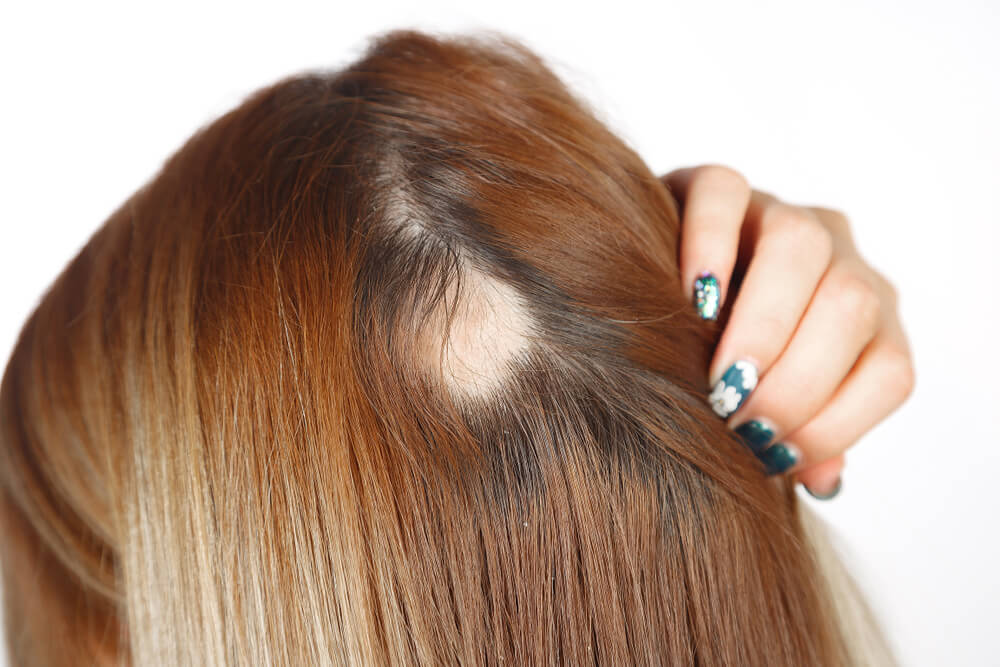So that baldness is quite common among men?and relatively well accepted? Hair loss or alopecia in women often creates a complex problem.
By looking at the standards of beauty that prevail in our society, we can easily understand the psychological consequences that alopecia can have on women.
- Alopecia refers to temporary or permanent hair loss.
- Which can be moderate or severe; hair loss is considered abnormal if it exceeds 100 hairs per day.
- This aesthetic and psychological problem may also be one of the first signs of an underlying pathology.
In addition, hair loss can reach the entire scalp or only a well-defined area. Women with alopecia often have difficulty seeking help, as shame, discomfort and low self-esteem come into play.
There are several types of alopecia that can affect women, with different levels of severity, the etiology is very heterogeneous, which makes medical and aesthetic treatments can vary considerably.
Can androgenetic alopecia affect nearly 50% of women, being more common with the onset of menopause and decreased female hormone estrogen?This type of alopecia mainly affects the upper part of the head, leaving the hair’s birthline unchanged.
However, in very advanced cases, the disorder can diffusely affect all hair.
Diagnosis before the first symptoms of the disease, in most cases, stops the hair loss process, increases hair density (hair can return to its usual texture) and regenerates lost tufts.
Scar alopecia is characterized by the appearance of fibrous scar tissue where hair follicles once existed; the presence of these scars prevents normal hair growth; scar alopecia can be congenital or acquired.
The main causes of gain are mechanical injuries (such as burns, surgeries, etc. ), autoimmune infections (lupus erythematosia, scleroderma, etc. ), bacterial infections (folliculitis), fungal infections (tiña), viral processes (herpes zoster) and tumors.
To arrive at a accurate diagnosis, it is essential to perform a trichological analysis and a histological examination with competent professionals.
Alopecia areata is characterized by the appearance of round-shaped baldness plaques anywhere on the body, although it most commonly appears on the scalp.
Unlike other types of alopecia, the area affected by hair loss appears healthy, without flaking, swelling or redness.
Stress or certain conflicting situations can trigger the appearance of alopecia areata plaques, but they are not the cause of the disease. This condition is reversible because hair follicles have not been destroyed and are healthy under the skin.
The main diagnosis may be made based on a trichological analysis, and it is necessary, in some cases, to also perform a biopsy or other immune study. Alopecia areata often evolves into universal alopecia.
Universal alopecia affects 2% of the population. It can be associated with many other conditions, such as thyroid problems, type 1 diabetes, allergies and asthma, and similar to other dermatological diseases, such as eczema, psoriasis or vitiligo.
There is a genetic predisposition to the disease. What is believed to be the triggers or causes of the disease is most likely stress, viral infections and drug use.
Alopecia usually begins with a small round area or scalp defect, which lacks hair, this disease is unpredictable. Just as hair can suddenly disappear, it can also grow back or even fall back.
The problem arises because the immune system attacks the cells of the hair follicles, which close and stop producing visible hairs; However, the follicles remain active, so at any time, if they receive the right stimulus, they can re-produce hair. even without treatment and after several years.
Until this happens, patients are actively looking for a cure; however, neither stem cell therapy nor growth factors nor robotic hair transplants work for them. Unfortunately, there is currently no cure for this disease.
In the case of female alopecia the impact is almost always negative, unlike men, society does not accept that a woman can go bald, so the psychological repercussions are greater, achieving, for example, isolation and depression.
Beautiful and bulky hair is even appreciated as a sexual attribute and symbol of the female soul. Hair loss is associated with menopause and loss of fertility.
Women who suffer from this disease usually wear hairstyles that camouflage the low density of hair they have, but it also causes them to stop going to pools, beaches, gyms and withdraw socially.
Psychology and dermatology have always been very close, we must remember that the nervous system and skin come from the same embryonic layer.
While the origin and pathogenesis of alopecia areata are autoimmune etiology, the importance of psychological factors in the origin and perpetuation of this type of alopecia has been proven, many patients report episodes of acute stress during their medical history.
Stress, resulting from job loss, traumatic relationship, or death of a family member, can lead to immune changes.
Therefore, from this type of fact, there may be a weakness or lack of control in the system that protects us, allowing the lymphocytes to attack the hair follicles.
Add to this the fact that the person is altered by their image and has a negative assessment of the change, we will understand how unbalanced and without resources they become to intelligently manage the emotional impact that comes from this whole scenario.

